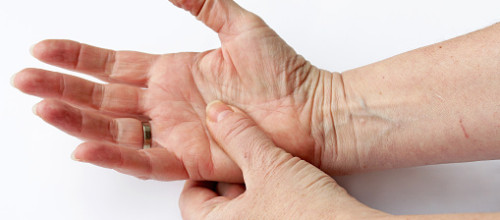
Arthritis Pain Symptoms: How Physical Therapy Helps
Hip arthritis symptoms can develop at any age, but the condition is more common in older adults. By age 85, the Center for Disease Control reports that 25% of all people may develop hip arthritis symptoms. There is no known cause for arthritis of the hip, and there is no group that is more at risk for the condition than any other. Sometimes hip arthritis symptoms lead to requiring joint replacement surgery, but whether a person requires surgery or not, physical therapists have treatment programs that are specifically designed to help alleviate arthritis pain.
What is Hip Arthritis?
We recently discussed the difficulties associated with arthritis when we covered knee pain. Unfortunately, arthritis pain is not limited solely to the knee, and most joints are susceptible to it. Osteoarthritis of the hip is inflammation of the hip joint, which can cause serious pain during normal, everyday activities. In the same way that we explained cartilage when looking at herniated discs, it exists to act as a shock absorber, and when the cartilage breaks down as a result of inflammation or injury, you experience pain. This causes your joints to stiffen and swell, which can make the pain even worse.
Some hip arthritis symptoms include:
- Sharp/shooting or dull/achy pain located in the buttocks, groin, hip, knee, or thigh.
- Hip joint stiffness, especially after lying or sitting down.
- Audible noise from the hip joint bones rubbing against each other.
- Pain and discomfort changing position (ex: sitting/standing), walking, or climbing stairs.
- Struggling to do regular activities, such as tying your shoes.
How Physical Therapy Can Help
Your physical therapist will evaluate your individual abilities and needs based on the hip arthritis symptoms that you have. Your therapist will also explain to you exactly what is causing your pain, and how the treatment being offered to you will help. Additionally, your therapist will stress the importance of staying active and keeping your joints in good condition, and ways to protect your hip joint to avoid future injury.
Your physical therapist is there to:
- Help reduce your pain
- Improve your limb/back motion
- Strengthen your muscles
- Expedite your healing process
Pain Reduction
Some methods that your physical therapist may use to reduce your pain include:
- Ice
- Heat
- Ultrasound
- Electrical stimulation
- Taping
- Exercises
- Manual therapy (ex: massage)
Motion Improvement
There are different levels of intensity for motion improvement techniques. Depending on your particular condition, your therapist may go two different routes:
- Passive: gentle movement of your joints done by your therapist
- Active: exercises and stretches done yourself
As you become stronger, your therapist will likely progress from passive therapies such as manual massage, to active therapies like having you ride a stationary bike.
Muscle Strengthening
During each stage of your recovery process, there are different exercises that will help improve your muscle strength.
These include using:
- Cuff weights
- Resistance bands
- Lifting weights
- Cardio equipment (ex: treadmills/stationary bikes)
Expedite Recovery
Thanks to your therapist’s experience in the field, he or she will be able to design a treatment program tailored to your needs in order to make your recovery go as quickly as possible. Being able to identify precisely what hip arthritis symptoms are bothering you most, he or she can focus on getting you back on your feet by correcting the specific problems you’re having.
PT from Start to Finish
Your therapist will know when it’s time for you to return back to your regularly scheduled activities, so be sure to heed your therapist’s advice. If you require surgery for your hip arthritis symptoms, your therapist will be a key player in your recovery process. Your therapist will begin helping immediately after your procedure by coming to visit you in the hospital and helping you get out of bed to walk around. From that point forward, your therapist will coach you through the best practices to take care of your joints and prevent future damage, all while rebuilding your strength and minimizing your pain.
